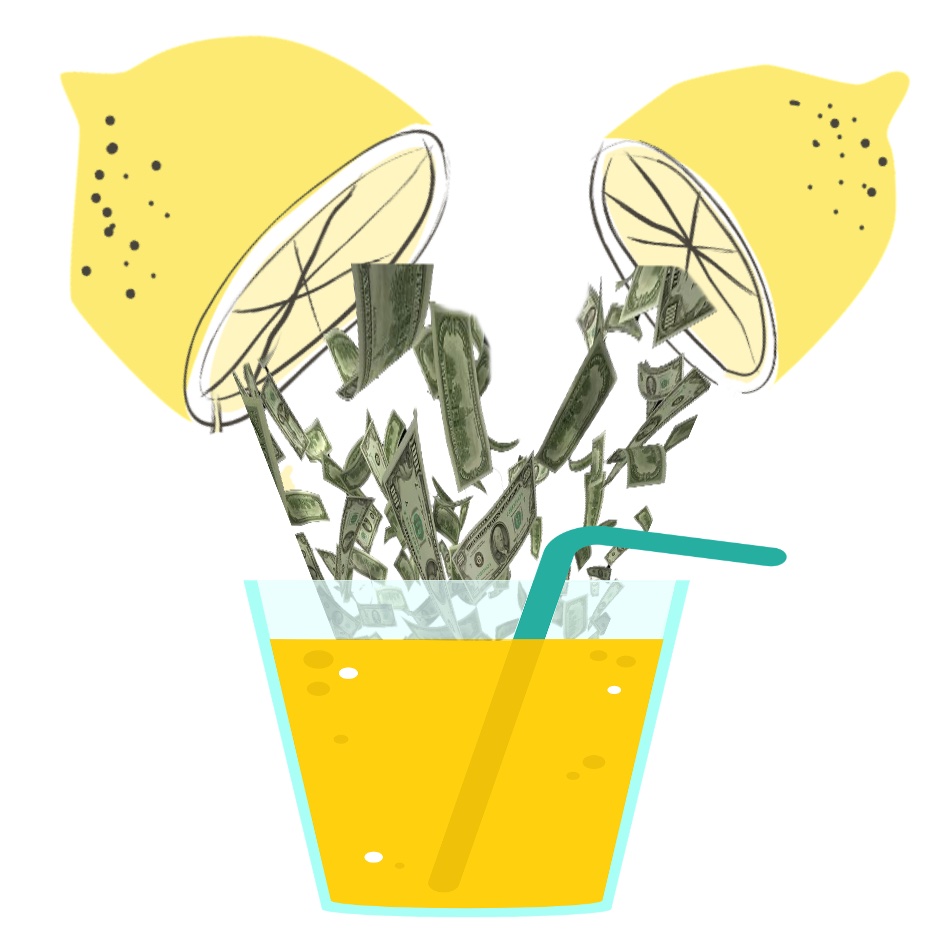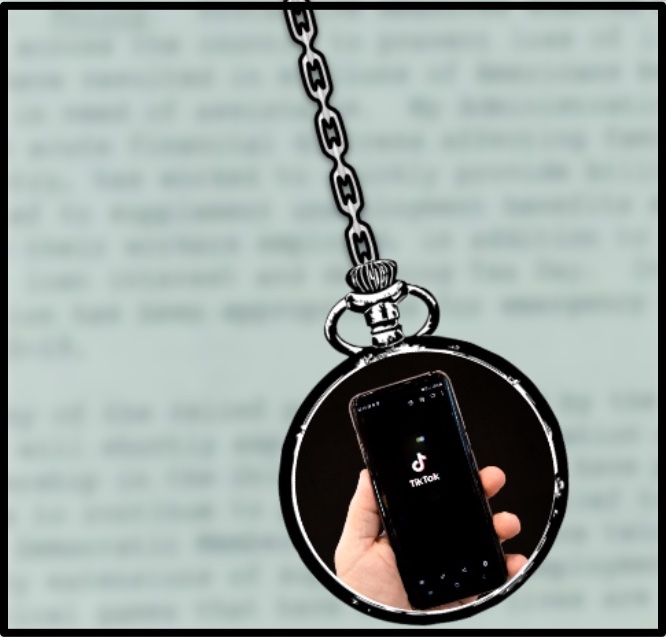
Aug 20
31
When life gives you parity products, make Lemonade

Trivia question for you: What was the first product ever sold online?
The answer, explains Smithsonian Magazine, depends on how you define “sold.” If a legal product and digital payment needn’t be components, then the winner is: weed! If legality matters but funds transfer still doesn’t, then the winner is: groceries! But if you require check marks by both “legal” and “digital payment,” then the winner is: a Sting CD!
My reluctant vote goes to the Sting CD. Reluctant, because weed-as-trailblazer is funnier.
Today, it’s difficult to name a product or service you can’t buy and pay for online. Financial products from banking to insurance have in large measure led the way. (Right behind porn. Like it or not, there’s no arguing the role porn played in helping digital payments take off.)
As online financial services grow in ubiquity, differentiation proves an increasingly difficult challenge. That’s especially true for insurance, which is arguably the quintessential parity product: Give us some money, and if something bad happens, we’ll give you some money. The sameness leaves insurers scrambling to set themselves apart. Geico features Martin, a lovable lizard who, in his inimitable Aussie accent, promises low rates. (Pre-Martin, how many Americans even knew what a gecko was?) Progressive’s spokesperson Flo hawks low rates, too, talking up a website that comparison shops before your eyes. Allstate and Farmers promote easy claims processing, the former with a character personifying mayhem, the latter parading odd claims the company has honored.
In all of the above, product features seem to take a back seat to self-deprecating humor. The advertiser’s goal may be to endear itself by not taking itself too seriously, humanizing an industry typically seen as heartless. (Discussion question: Is Flo endearing or annoying?)
The Lemonade mix
But now there’s a new online insurance company in town, and it has found a way to make lemonade from parity in a new way. I refer to Lemonade, Inc. with its Giveback program. Forbes sums up Lemonade as …
… powered by a unique combination of artificial intelligence and behavioral economics to disrupt the centuries-old insurance industry. It offers homeowners and renters insurance in the U.S., and gives underwriting profits to nonprofits selected by its community during its annual Giveback.
Lemonade cofounders Daniel Schreiber and Shai Wininger come from legal tech backgrounds, not a financial one. Instead of having to drag legacy systems screaming and kicking into the 21st century, they built Lemonade as a digital company from the ground up. PYMNTS.com characterized Lemonade as not “bogged down by outdated systems and processes—and many of the market’s biggest points of frictions can be overcome right from the start.”
Lemonade’s marketing strategy also seeks to endear itself, not by appealing to humor, but rather by appealing to humanity. As quoted in the above-referenced Forbes article, Schreiber said this:
“Lemonade set out to make insurance loveable, but also to transform it from a necessary evil into a social good. We built an unconflicted business model powered by AI and behavioral economics, and invented the Lemonade Giveback, where leftover premiums are donated to charities our customers choose.
The approach seems to be working, for Lemonade is growing. Why the approach is working is not as obvious one might think. Donating a percentage of sales to charity can make for great PR, less so a sales-booster. And though PYMNTS.com suggests that the Giveback program may reduce “so-called soft fraud, in which a policyholder files a claim for more funds than they actually need,” well, call me cynical, but I think that’s wishful thinking. For what it’s worth, so does Insurance Nerds’s Nick Lamparelli.
But here’s what Giveback definitely does: It removes Lemonade’s incentive to overcharge and to deny claims, thus neutralizing common perceptions of the industry.
For a product category that no one particularly wants but everyone needs, that’s a strategy that could actually prove a game-changer.

Popular movies like American Hustle, Dirty Rotten Scoundrels, The Sting, and Catch Me If You Can show that audiences like a good con artist story. The films even manipulate—con?—us into rooting for the bad guy, our consciences somehow assuaged by marks who deserve or at least can afford the loss.

The deserving-mark trope entertains, but in real life cons hurt people. Moreover, many of the classic cons of history have not gone, but simply changed clothes and reappeared.
Convention demands beginning with a look at the infamous Brooklyn Bridge. “I have a bridge to sell you” is no mere cliché. Many people have “purchased” the Brooklyn and other bridges, bumping up against hard reality only when forced to take down their newly constructed tollbooths. The most famous of the Brooklyn Bridge sellers was George C. Parker, who in the late 19th century targeted immigrants filled with the hopes and promises of the American dream—and took them for their life savings.
Capone, counts, and grateful millionaires
Perhaps more audacious was “Count” Victor Lustig, whom Smithsonian magazine dubbed “America’s greatest con man.” He twice got away with alleging the Eiffel Tower was due for demolition and selling it as scrap metal to the highest bidder. In the U.S., he sold machines purported to turn paper into currency. He even conned $5,000 from none other than Al Capone.
In 1881, French peasant Thérèse Dauignac Humbert was in the right time and the right place to revive American millionaire Robert Henry Crawford from a heart attack. Two years later, Crawford thanked her by willing her a safe containing $20 million. Crawford’s nephews lost no time in contesting the will, persuading a judge to seal the safe pending litigation. With a sealed safe for evidence and its contents for collateral, high society welcomed Humbert and favored her with numerous, hefty loans. The safe was finally opened in 1902. According to Jay Robert Nash in his book Hustlers and Con Men, inside were negotiable bonds worth $1,000, an empty jewel box, and some brass buttons. There never was a Robert Henry Crawford. His “nephews” were in reality Humbert’s brothers. “A dozen Humbert creditors committed suicide the next day,” Nash wrote. As for Humbert and her brothers, they received only “short jail terms.” Echoes of the sealed safe ruse can be found today in loans made by trusting individuals reassured by promises of repayment “as soon as my next deal goes through.”
Three-Card Monte, a centuries-old and illegal scam, still goes on. You need only walk the streets of New York or other major cities to find clandestine games suckering marks.
Nigerian money scams: ridiculous for a reason
A modern iteration of the Spanish prisoner game is found in Nigerian money scams, which NPR reported are “ridiculous for a reason”:
“It’s actually a brilliant strategy designed to save time and maximize profit by immediately identifying only the most gullible marks, according to an analysis by Cormac Herley of Microsoft Research.”
Indeed, in Herley’s abstract we find:
… tales of fabulous amounts of money and West African corruption will strike all but the most gullible as bizarre … It won’t be pursued by anyone who consults sensible family or friends, or who reads any of the advice banks and money transfer agencies make available. Those who remain are the scammers’ ideal targets.
Had you been around in 1890, you might have received a letter out-and-out offering to sell you counterfeit money, sometimes called the Green Goods game. To assure readers of quality fakes, one sender wrote …
“… it would be perfectly foolish to send out poor work, and it would not only get my customers into trouble, but would break up my business and ruin me.”
I knew someone whose family fell for a modern version of the Green Goods game—despite his experience in financial services. For cents on the dollar, they purchased allegedly stolen, dye-bombed currency. Included “at no extra charge” was a dye-removal solution. Of course neither was delivered. It hadn’t occurred to the marks to ask why the seller didn’t keep and clean the currency for himself.
Readers have doubtless heard of the Ponzi scheme, which generally uses later investors’ funds to pay high rates of return to earlier investors. Charles Ponzi didn’t invent it but made it famous. He died in 1949, but his scheme still pops up. More famous that Ponzi himself is Bernie Madoff …
… the former non-executive chairman of the NASDAQ stock market, and the confessed operator of the largest Ponzi scheme in world history, and the largest financial fraud in U.S. history. Prosecutors estimated the size of the fraud to be $64.8 billion, based on the amounts in the accounts of Madoff’s 4,800 clients as of November 30, 2008.
Legal cons
Sadly, not all scams are illegal. Most drug stores carry preparations claiming to cure a host of maladies despite bearing the government-required disclaimer, “This product is not intended to diagnose, treat, cure, or prevent any disease.” The disclaimer is there for a reason, namely, that the preparations have not been demonstrated to do what purveyors claim. Unfortunately, that doesn’t seem to hamper sales.
Pyramid schemes—which pay enrollees for duping people into enrolling after them—are strictly illegal, yet they persist legally under innocuous-sounding names like “multi-level” or “network” marketing. They are legal because tangible products are involved. The problem is the open secret that the real money to be made is not in selling products but in enrolling more members, essentially a legal pyramid scheme. Science writer Brian Dunning has pointed out that the hope is unattainable:
Of all the thousands of network marketing plans available now or in the past, if only one of them had ever had even a single line active to only 14 levels deep, that alone would have required the participation of more human beings than exist.
Moreover, Dunning writes,
On average, 99.95% of network marketers lose money. However, only 97.14% of Las Vegas gamblers lose money by placing everything on a single number at roulette.
The old adage “… if it seems too good to be true …” will always apply. Sadly, whether due to being over-trusting or to an avarice-based willingness to push the boundaries of ethics and law, there will always be people who ignore the adage.

Something remarkable took place on Wall Street last week. The total value of a company by the name of Apple, Inc.—perhaps you’ve heard of it—reached two trillion dollars.
Two. Trillion. As in a 2 followed by 12 zeroes. A value that, to date, no other U.S. company has ever attained.
PYMNTS.com did a great job of putting the initial digit and its train of zeroes in perspective:
… only seven countries on the planet have a GDP of more than $2 trillion. Among the companies whose GDP is less than Apple’s valuation: Italy, Brazil, Canada and Russia.
Moreover, a mere 18 days earlier, Apple was rocking the investment world by having attained a value of a trifling one trillion. Which means there’s no telling what that number may be when this post appears.
Not bad as comebacks go
Two trillion isn’t bad for a company that the biggest rock band in history made a habit of suing. (Namely, the Beatles. Perhaps you’ve heard of them, too.) Or for a company that in 1997, 10 years before iPhone was even a glimmer in Steve Jobs’s eye, was all but kaput.
That Apple was once on the rocks will come as no surprise to anyone familiar with Jobs’s approach. Brian Merchant’s book The One Device: The Secret History of the iPhone reveals Jobs’s habit of scheduling press conferences to announce products that, unbeknownst to the press, were neither completed nor fully proven. Behind the curtain, his team stood with crossed fingers, hoping against hope that the prototype they’d finished cobbling together only minutes earlier wouldn’t let them down. Remarkably, luck was with them every time.
In the end, Microsoft swooped in and saved the day by pumping $150 million into Apple. Not a few observers speculated that the move was calculated to ensure Microsoft of a continuing, worthy competitor in order to avoid anti-trust measures. If so, it may have helped, but not completely.
Not just Apple
Its $2 trillion aside, Apple is by no means the only high tech company riding high at the moment. The New York Times reported:
The stocks of Apple, Amazon, Alphabet, Microsoft and Facebook, the five largest publicly traded companies in America, rose 37 percent in the first seven months this year, while all the other stocks in the S&P 500 fell a combined 6 percent, according to Credit Suisse. Those five companies now constitute 20 percent of the stock market’s total worth, a level not seen from a single industry in at least 70 years.
I don’t for a minute pretend to be the only commentator who has observed the correlation between the COVID-19 pandemic and increased use of digital payment systems. The current self-quarantine environment certainly seems to have played its part. Back in March, the Times reported:
While the rest of the economy is tanking from the crippling impact of the coronavirus, business at the biggest technology companies is holding steady—even thriving … With people told to work from home and stay away from others, the pandemic has deepened reliance on services from the technology industry’s biggest companies while accelerating trends that were already benefiting them.
The gains are a mixed bag. We’re darned lucky that we have digital technologies at a time that we desperately need them. Yet significant numbers of people have no access to them. And no one with an ounce of morality, not even the biggest digital technology proponent, would call the toll in human lives worth it. (Shortly before the preceding Times piece ran, I posted, “Any havoc the pandemic wreaks on the global and local economies and any effects it has on the payments business pale in comparison to the cost of lost human lives. I am all for the growth of the digital payments industry. But not this way.”)
The future rarely plays by anyone’s rules
“Since 2020 has been a year full of all kinds of surprises,” opined PYMNTS.com, “hard predictions … are something of a sucker’s game. Where does Apple go from here—and how long will it take to get to $3 trillion? Depends on what the next entry in the hit parade is.”
It would be a mistake to assume that today’s burgeoning tech giants can count on being secure forevermore. The market has a long history of near-losers coming back from the brink à la Apple, and of the toppling of presumed topple-proof giants à la Sears.
The future has a habit of not being predictable. It’s part of what makes this business exciting.
Aug 20
20
TBT: A glass of bot fraud: Half-full or half-empty?

This week for TBT: A refresher on how some companies rip off digital advertisers. Originally posted August 25, 2017.
IF YOU’RE A glass-is-half-full kind of person, I have good news. About 80 percent of what you spend on digital advertising is likely to show up under the noses of people you’d like to reach.
If you’re a glass-is-half-empty kind of person, the news isn’t so cheery. About 20 percent of what you spend on digital advertising is likely to show up under no noses at all.

This is reportedly due to bot fraud, automated systems that inflate views and clicks, on which, as you know, digital advertising rates are based. Individual bot fraud apps, hard to detect on their own, are often networked into—what else?—botnets, which have the power to make advertisers overpay in increments that add up fast. The overage, of course, lines the pockets of bad guys.
There is no shortage of ways to commit bot fraud. You can pile multiple ads atop one another with only the top ad visible, while each hidden ad is counted as having been viewed. You can reduce ads to a single, invisible pixel and crowd oodles of them onto a page where, again, they’ll be counted as viewed. You can create content-less sites loaded with stacked and single-pixel ads, and then “launder” to them ad impressions from legit sites. For more such activities—despicable, ingenious, or both, depending on how you look at them—check out Ryan Joe’s entertaining and informative Ad Exchanger article, “The Book Of Fraud: A Marketer’s Guide To Bots, Fake Domains And Other Dirty Deeds In Online Advertising.”
Just how serious are the numbers? According to CNBC,
New figures released today suggest that ad fraud will cost brands $16.4 billion globally this year, and that nearly 20 percent of total digital ad spend was wasted in 2016.
So-called invalid traffic, where bots rather than humans view or click on adverts on websites, was estimated to cost advertisers $12.5 billion in 2016 by ad verification company Adloox.
In December, in what it called “the biggest ad fraud ever,” Forbes reported:
A group of Russian criminals are making between $3 million and $5 million every day in a brazen attack on the advertising market, security firm White Ops claimed today. It’s the biggest digital ad fraud ever uncovered and perpetrated by faking clicks on video ads, the company said.
Not to be overlooked, Business Insider projects even higher numbers for 2017:
The amount of global advertising revenue wasted on fraudulent traffic, or clicks automatically generated by bots, could reach $16.4 billion in 2017, according to a new study commissioned by WPP and cited by Business Insider.
That figure is more than double the $7.2 billion the Association of National Advertisers estimated would be lost due to ad fraud in 2016.
Not a few other publications, including Fortune and Adweek, report similar, unsettling numbers. But a study by cyber security firm WhiteOps, commissioned by the Association of National Advertisers, predicts a downturn in bot fraud in 2017:
The third annual Bot Baseline Report reveals that the economic losses due to bot fraud are estimated to reach $6.5 billion globally in 2017. This is down 10 percent from the $7.2 billion reported in last year’s study. The fraud decline is particularly impressive recognizing that this is occurring when digital advertising spending is expected to increase by 10 percent or more.
One can only hope. By my calculation, $6.5 billion is nearly ten billion less than $16.4 billion predicted by CNBC and Business Insider.
Still, $6.5 billion could pay for a lot of lunches. Happily, the White Ops report offers suggestions for fighting bot fraud. Among others are demanding transparency for sourced traffic, refusing payment on non-human traffic in media contracts, and encouraging Media Rating Council (MRC) accredited third-party fraud detection on walled gardens. You can download the WhiteOps report in its entirety by clicking here.

On August 6, Donald Trump signed an executive order banning access to social media apps TikTok and WeChat from within the United States. The order is to take effect on September 20.
Such actions are not new. On June 29, India banned TikTok and 58 other apps developed by Chinese firms. And for years China has banned access to Google, YouTube, and Facebook. That, however, didn’t deter China from expressing its displeasure at being the target this time around. PYMTS.com reported,
Chinese state-run media has likened news of a potential TikTok sale to “open robbery” and branded the U.S. as a “rogue country.” China Daily, as cited by CNBC, has said there are “plenty of options” to respond to what it said is a “planned smash and grab” by the U.S.
Why the sudden concerns about TikTok and WeChat?
In a recent NPR interview, Hong Kong-based CNN senior producer James Griffiths, author of The Great Firewall Of China: How To Build And Control An Alternative Version Of The Internet, explained the rationale this way:
… there does seem to be some evidence that both of these apps gather a lot and lot of data on users—you know, not necessarily any more than other social media apps on peoples’ phones gather, but that is a lot of data … And then the argument is that as a Chinese company, there are obligations under Chinese law … also, there is a kind of extralegal obligations [sic] … pressure that Beijing can bring on these companies if it wants access to that data. And so Washington has argued that given that these companies have all this data, and China can in theory access it, that might present a national security risk if users such as … government employees or families of government employees are using these apps.
In an opinion piece for the New York Times, Tufts University assistant professor of cybersecurity policy Dr. Josephine Wolff validated security concerns—to a point:
No one knows better than the United States government that the data kept within its borders is highly vulnerable to Chinese cyberespionage. In 2015, Chinese hackers stole personal information belonging to more than 21 million people from the federal government’s Office of Personnel Management. In 2017, members of the Chinese military managed to steal records belonging to 145 million Americans from the U.S. credit bureau Equifax, according to charges filed by the Department of Justice earlier this year.
When the Department of Defense banned TikTok from government-issued smartphones, Wolff continued, that made sense. However, she argued,
… for the government to expand that ban to the phones of civilians in the United States, it needs to show some clearer indication that the app poses a real risk to its users. Otherwise, this just looks like an anti-competitive decision made to disadvantage a Chinese tech firm in the name of strengthening security … a retaliatory jab in the ongoing tensions between China and the United States.
(In the interest of fairness, I should reiterate that Wolff’s is an opinion piece, and point out that Mr. Trump and the Times editorial board are not exactly known for their mutual trust and respect.)
TikTok demographics
The executive order may not sit well with younger Americans, who make up TikTok’s sweet spot. The app boasted over 123 million U.S. users at the end 2019, Brandtastic reports. Worldwide, 26 percent of TikTok users are between 18 and 24, and half are under 34. Sixty percent are female and—not that you couldn’t have done the math in your head—40 percent are male.
It will be interesting to see if the TikTok order affects voting in November. While I doubt that it will, the political clout of the U.S. TikTok generation is indisputably on the rise. According to the U.S. Census Bureau:
Among 18- to 29-year-olds, voter turnout went from 20 percent in 2014 to 36 percent in 2018, the largest percentage point increase for any age group—a 79 percent jump.
Meanwhile, the order has sent U.S.-based TikTok content creators scrambling. TikTok poster Morgan Eckroth, who has racked up nearly four million followers, told ABC News, “I think it’s a big wake-up call for creators who haven’t necessarily diversified their platform usage.”
Yet TikTok’s days may not be numbered.
Facebook has launched its would-be answer to TikTok in the form of Instagram Reels. “Would-be,” because knocking of TikTok is by no means a cinch. Digital Trends noted:
According to a survey of influencers conducted by marketing agency Fanbytes, 75% of TikTok creators polled said they would not move their content to Instagram Reels, saying that Reels is essentially a clone of TikTok. Digital Trends spoke with half a dozen creators last week and received similar feedback. Creators said TikTok has preferable algorithms, as well as the coveted “For You” page, where content has the ability to grab more eyes, go viral, and grow audiences exponentially.
The timing of the launch is fortuitous. Development obviously began well before the executive order. But Instagram Reels won’t necessarily inherit a vacuum to fill. Microsoft is looking into purchasing TikTok’s U.S. operations on condition of its severing data-sharing ties with Chinese parent company ByteDance. The dollar amount of the potential transaction, which Mr. Trump said he would support, is yet to be determined, however, Forbes’s Trefis Team puts the number at “about $20 billion.”
Microsoft’s interest in TikTok is not difficult to fathom. Per Forbes,
Although TikTok has not yet started to meaningfully monetize its users (we estimate average revenue per user to be roughly $1 per quarter, versus about $33 for Facebook), it certainly has a lot of potential. TikTok users appear highly engaged, spending over 50 minutes on the app per day. That’s more time than Facebook and Snapchat users, who spend between 30 to 40 minutes. TikTok’s demographic, which is significantly skewed towards teens and young adults, could also prove valuable to marketers.
Mr. Trump has suggested that, if the sale goes through, the United States should receive a commission. While that’s not necessarily impossible, CNN Business and other media have pointed out that there’s no legal basis or precedent for that.
Microsoft has until September 15 to strike a deal. The clock is tiktokking.